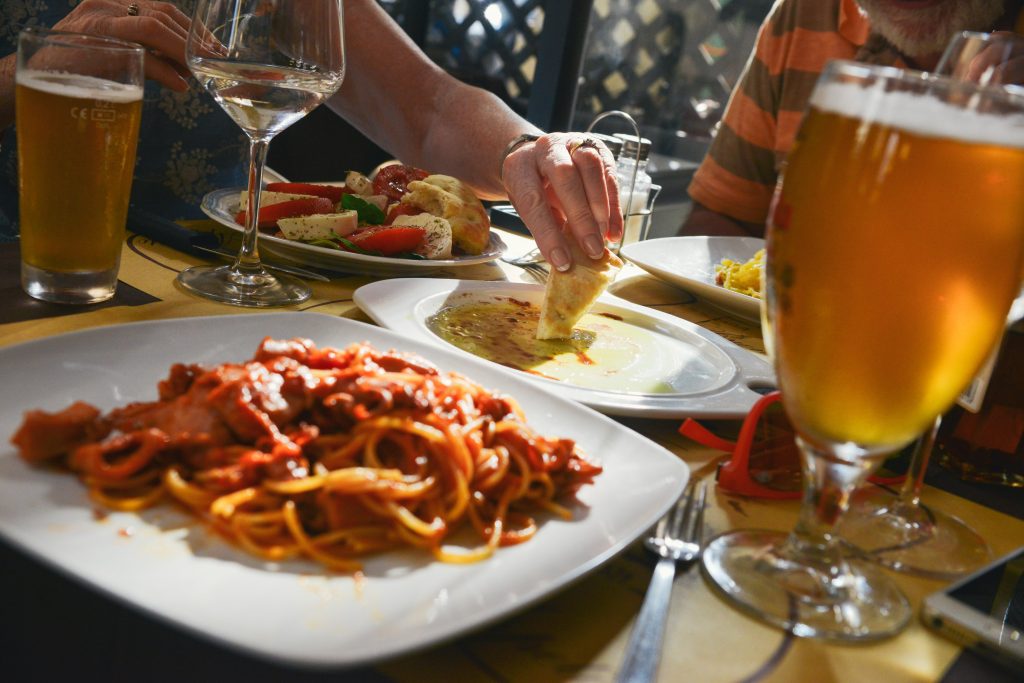If you’ve been trying to switch to healthier, more earth-friendly food and an overall greener lifestyle, know that you’ll find lots of options in the aisles of the grocery stores. It will also interest you to know that traditionally, people ate a more nutritious diet in other times and other parts of the world. Americans were among them before developing mass-produced goods and chemical additives to make products last longer.
Here’s a quick peek at food cultures worldwide and what makes them truly healthy, both for people and the environment where the food is produced.
Eating Meat is Not Bad for the Environment
The one thing that food experts stress is that eating meat and animal products is not inherently a problem. Rather, it’s all about how the animals are reared and processed like you pluck your red berries from the bush. The packaged meat that you shop for is laden with chemicals added at every stage. Artificial fertilizers are added to the soil when growing animal feed, supplements are fed to the livestock, and additives and preservatives are used to make the meat marketable.
Farms and orchards growing fruits and vegetables also use lots of pesticides to raise profitability, not to mention the chemicals used during packaging to maintain the shelf life of easily perishable goods. Food cultures relying on sustainable agriculture, on the other hand, have far healthier ingredients in the meals. Here are four earth-friendly choices you can make.
Kosher Food
Kosher food culture is based on the vital principle that humans are what they eat. Accordingly, Jewish culture only permits food produced responsibly. It goes beyond ingredients–farmers and company owners are expected to treat their workers well with reasonable working hours and conditions and fair wages. Kosher rules require that dairy and meat products be taken from animals raised and processed with compassion.
The kosher diet does little to limit grains, fruits, and vegetables. Most of these foods can be eaten by a person following kosher law if it has minimal environmental impact and a regard for health and safety.
If you check grocery store labels, you might just discover that at least 41% of packaged food carries the kosher certification. Opting for these foods is a great way to ensure that your family eats only foods with the ingredients clearly listed. You can also be sure that there won’t be any unknown additives involving shellfish that can cause food allergies. That’s just one of the reasons why people go for kosher Hanukkah gift baskets for their loved ones, even if they aren’t Jewish.
Vietnamese Noodles
A bowl of pho is traditional street food with beer in Vietnam and a complete meal by itself. The base is a broth made with a bit of meat and generous helpings of vegetables cooked over three hours. Grains can also be added along with noodles, and the ultimate recipe varies with each kitchen. You can add caramelized onions, chopped carrots, peppers, beans, ginger, and a selection of spices that the family loves.
It is interesting to note that the Vietnamese eat 33% less beef than Americans, which is easier on the environment. Protein can come from other sources, such as seafood. Seafood and fish sauce as a topping are staples in Vietnamese kitchens.
Indian Cuisine with Dal as the Star of the Show
Legumes and lentils are an essential part of every Indian meal, whether cooked into a stew with vegetables or converted into pancakes with a stunning range of flavor options.
What makes Indian food culture earth-friendly is that growing legumes restores degraded soil by replacing nitrogen. After crops are harvested and processed, the leftover chaff is used as cattle feed. Indians traditionally never eat beef, though dairy products are an essential part of the diet. Furthermore, no meal is complete without colorful and tasty spices that are associated with medicinal properties and heightened immunity.
A farm or rural homestead is an autonomous unit common in India with people growing fruits, vegetables, and grain using organic methods with cattle manure for fertilizing. Most dishes are made with ingredients processed by hand and cooked in earthenware utensils, now rediscovered globally as eco-friendly and beneficial for health.
Low-Impact Venezuelan Mussels and Seafood Meals
A hearty seafood meal in a bowl heaped with mussels, scallops, oysters, and clams–that’s the all-time favorite of a Venezuelan kitchen. Typically, these ingredients are harvested from the sands of beaches and known to be rich in protein. Since these seafood varieties are filter feeders requiring only minuscule amounts of phytoplankton, they have a minimal impact on the environment.
Like so much of the world, rice is a staple in Venezuela. You’ll find it enhanced with savory peanuts and wholesome vegetables like onions, garlic, or sweet peppers. Food is cooked in clay pots, roasted, or stir-fried – all of which can result in a healthy dinner.
If you’ve been looking for wholesome, nutritious cuisines that are earth-friendly, easy to cook, and healthful, you might want to go back to the basics. Search for dishes from traditional food cultures across the world, and you might be pleasantly surprised by what you find.

